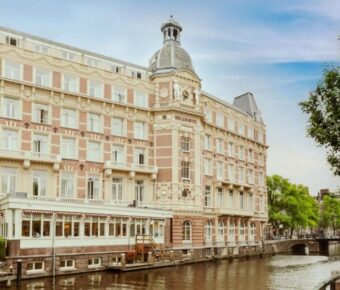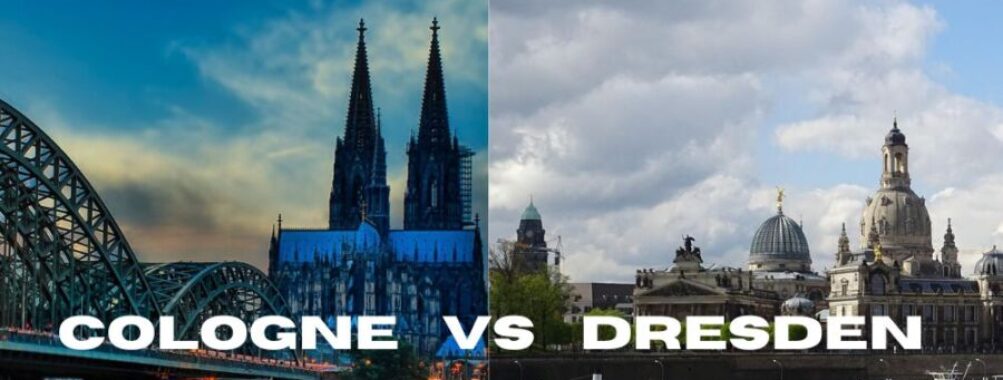
Cologne vs Dresden: Battle of Germany’s Most Enchanting River Cities Revealed
Germany offers two remarkable cities with distinct personalities – Cologne and Dresden. Each destination holds unique charms for travelers seeking different experiences in German culture and history.
While Cologne captivates visitors with its magnificent Gothic cathedral and vibrant Rhine River culture, Dresden stands out for its meticulously restored baroque architecture and world-class art museums. The cities present contrasting views of German heritage, with Cologne’s Roman roots and medieval landmarks competing against Dresden’s royal Saxon splendor.
Travelers’ budgets stretch further in Dresden, where living costs run about 25% lower than in Cologne. Both cities feature excellent museums, striking landmarks, and rich cultural scenes that reward visitors with authentic German experiences beyond the typical tourist destinations.
Contents
- Geographical Overview
- Location and Size
- Historical Background
- Cultural Significance
- Artistic Heritage
- Unique Traditions
- Economic Perspectives
- Cost of Living Comparison
- Employment Opportunities
- Lifestyle and Amenities
- Recreational Activities
- Shopping and Dining
- Transportation Networks
- Public Transport Systems
- Accessibility and Connectivity
- Tourist Attractions
- Cologne Cathedral
- Dresden’s Baroque Landmarks
- Annual Events and Festivals
- Cologne’s Celebrated Carnivals
- Dresden’s Cultural Festivities
- Frequently Asked Questions
- What are the must-visit attractions in Cologne compared to Dresden for history enthusiasts?
- How does the cultural scene in Cologne contrast with that in Dresden?
- In terms of local cuisine, how do Cologne and Dresden differ for food lovers?
- Can you highlight the differences in the festive events or traditions between Cologne and Dresden?
- What are the key differences in the transportation options when traveling within Cologne versus Dresden?
- How do the shopping experiences in Cologne compare to those in Dresden for unique local goods?
- More Travel Guides
Geographical Overview
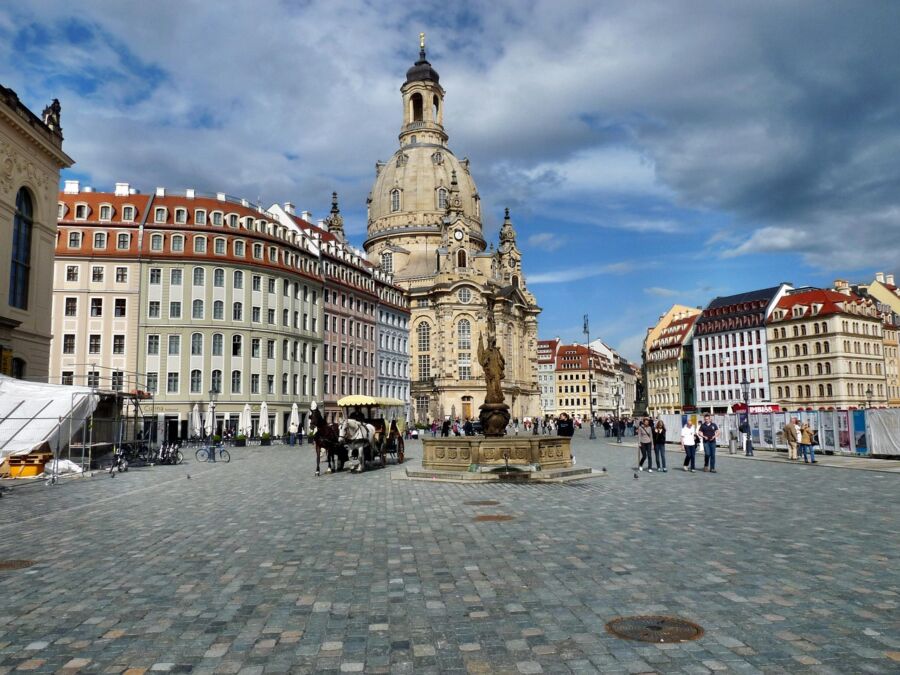
Both Cologne and Dresden occupy distinct positions within Germany’s landscape, with unique geographical features that shaped their development. These two historic cities grew around major rivers that influenced their trade routes and urban expansion.
Location and Size
Cologne sits in western Germany along the Rhine River, making it a key transportation hub. The city covers 405 square kilometers and stands as the largest city in the North Rhine-Westphalia region. Its position near Belgium and the Netherlands helped it become a major trade center.
The Rhine River splits Cologne into eastern and western sections, with most historic buildings on the left bank. The city’s layout features a semicircular shape that expanded outward from its medieval center.
Historical Background
Dresden lies in eastern Germany in the Elbe Valley, serving as the capital of Saxony. The city grew from a small fishing village into a cultural center under Augustus the Strong in the 18th century.
World War II bombing destroyed much of Dresden’s historic center in 1945. The city rebuilt many landmarks like the Frauenkirche, which took until 2005 to complete. Today’s Dresden blends restored baroque architecture with modern buildings.
The Elbe River plays a central role in Dresden’s layout, with the Altstadt (Old Town) on the left bank and the Neustadt (New Town) on the right. The river valley’s natural beauty earned it the nickname “Florence of the Elbe.
Cultural Significance
Both Cologne and Dresden stand as pillars of German cultural heritage, each city offering unique artistic treasures and cherished traditions that draw visitors from around the globe.
Artistic Heritage

The Dresden Zwinger shines as one of Germany’s finest Baroque buildings, housing world-class art collections in the Old Masters Picture Gallery. The city’s Semperoper opera house creates unforgettable musical experiences with its perfect acoustics and stunning architecture.
Cologne’s Museum Ludwig holds one of Europe’s largest Picasso collections and amazing modern art pieces. The Romano-Germanic Museum tells stories of the city’s ancient past through Roman artifacts and mosaics.
Both cities have rebuilt their artistic landmarks after World War II. Dresden’s careful restoration of the Frauenkirche took 60 years to complete. Cologne preserved its Gothic cathedral, which still stands tall as the city’s artistic crown jewel.
Unique Traditions

Cologne’s Carnival ranks as one of Germany’s biggest festivals. The streets fill with costumes, music, and dancing for days. The city also hosts Christopher Street Day celebrations that bring rainbow flags and equality parades each summer.
Dresden’s Christmas markets create magical winter scenes. The Striezelmarkt dates back to 1434, making it Germany’s oldest Christmas market. The sweet smell of Stollen bread fills the air while craftspeople sell traditional ornaments.
Both cities embrace their beer cultures. Cologne’s Kölsch beer comes in small glasses called “Stangen,” while Dresden serves its local Radeberger pilsner in traditional beer halls.
Economic Perspectives
Dresden and Cologne show distinct economic differences in terms of living costs and job markets that shape daily life in these German cities.
Cost of Living Comparison
Life in Cologne costs about 25% more than Dresden. A person needs €5,112 in Cologne to maintain the same living standard as €4,500 in Dresden.
Groceries are 6.6% pricier in Cologne. The salary in Cologne covers living costs for roughly 1.8 months, while Dresden’s wages stretch to 2.1 months.
Cologne ranks as Germany’s 31st most expensive city. Dresden sits at 426th place, making it much more budget-friendly for residents.
Employment Opportunities
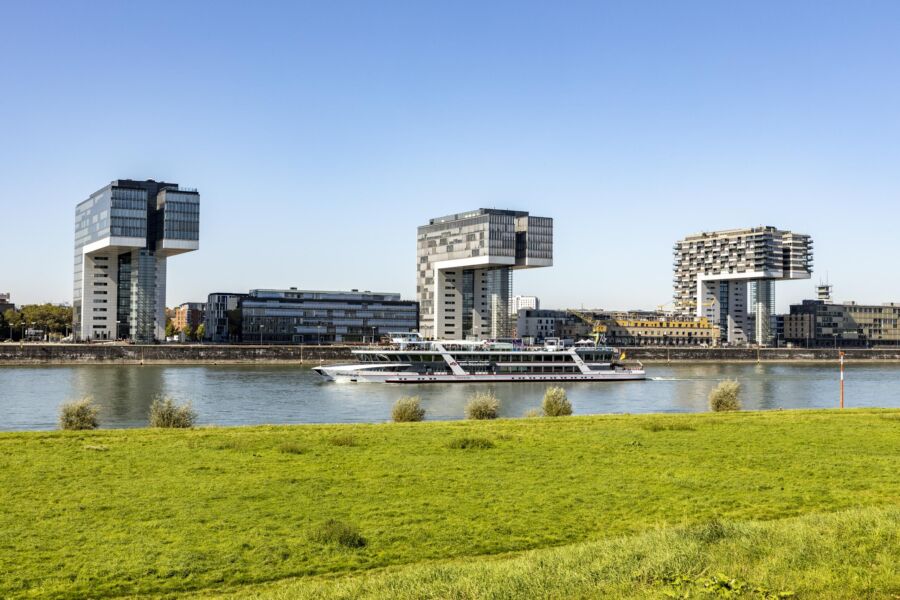
Both cities offer strong job markets with unique strengths. Cologne’s larger size brings more diverse career options across many industries.
Dresden has grown into a tech hub with many research and development jobs. The city attracts young professionals with its mix of established companies and startups.
The unemployment rates affect career growth in both places. Lower unemployment numbers in recent years point to good job prospects and economic strength in these cities.
Both cities draw talent from across Germany. Their different economic focuses – Cologne’s media and insurance sectors versus Dresden’s technology emphasis – create distinct career paths.
Lifestyle and Amenities
Both cities offer distinct social atmospheres and entertainment options that cater to different interests. Cologne brings a vibrant energy while Dresden delivers a mix of cultural sophistication and modern fun.
Recreational Activities
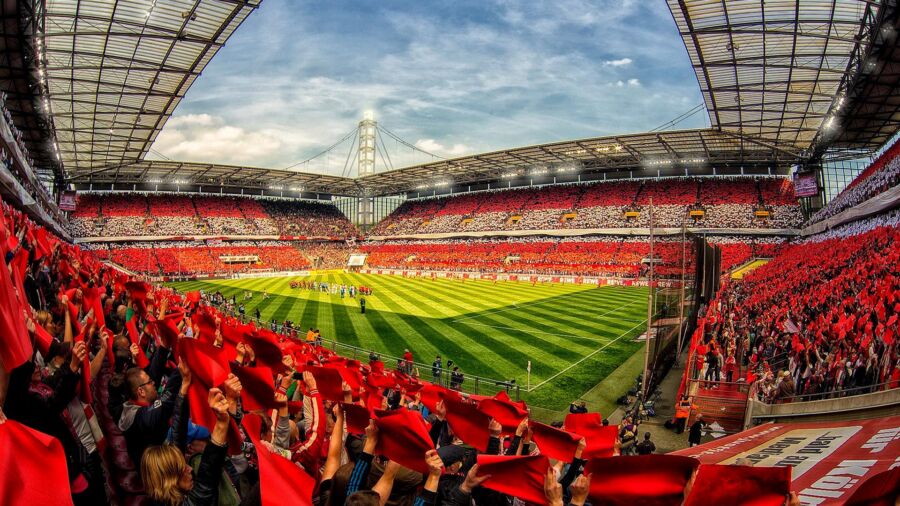
The nightlife in Cologne pulses with energy, especially around the Rings area where bars and clubs stay open late. Sports fans flock to the RheinEnergieStadion to watch FC Köln soccer matches. The Rhine River promenade fills with joggers and cyclists during warm months.
Dresden’s entertainment scene centers on the trendy Neustadt district, packed with indie music venues and art galleries. The Elbe River Valley provides scenic paths for hiking and biking. The city hosts regular outdoor film screenings and concerts in its many parks during summer.
Shopping and Dining
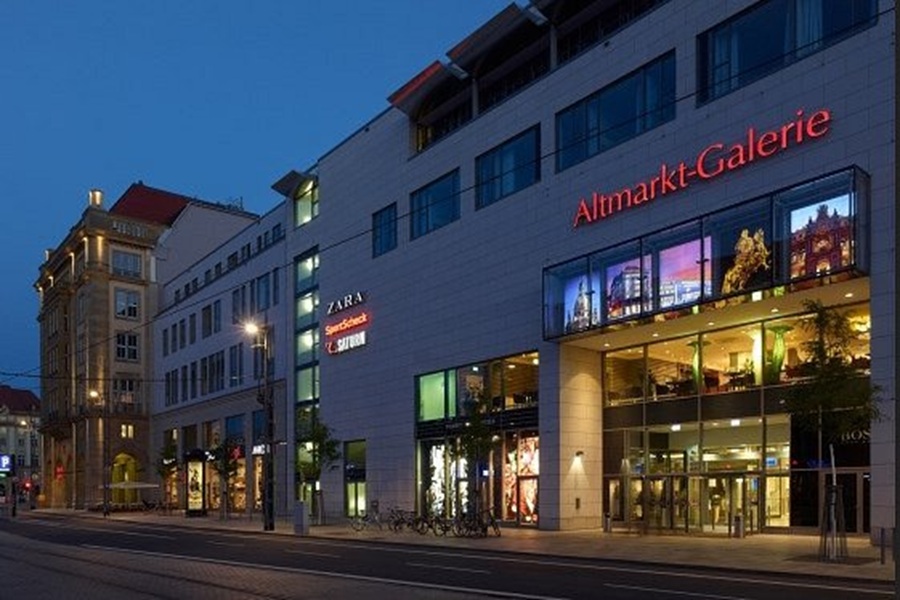
Cologne’s shopping district spans the busy Schildergasse and Hohe Straße streets. The Belgian Quarter features boutique shops and cozy cafes. Local brewhouses serve traditional Kölsch beer alongside hearty German meals.
Dresden’s main shopping areas include the modern Altmarkt-Galerie mall and the charming Neustadt neighborhood. The city takes pride in its food scene, mixing Saxon specialties with contemporary dining. Small wine bars and craft beer pubs dot the historic center.
Many visitors enjoy browsing Dresden’s artisan shops for handmade Meissen porcelain and local crafts. The city’s famous Christmas market transforms the Altmarkt square into a festive wonderland each winter.
Transportation Networks
Both Cologne and Dresden offer modern transit systems that keep residents and tourists moving smoothly through these bustling German cities. Each city brings unique advantages to getting around.
Public Transport Systems
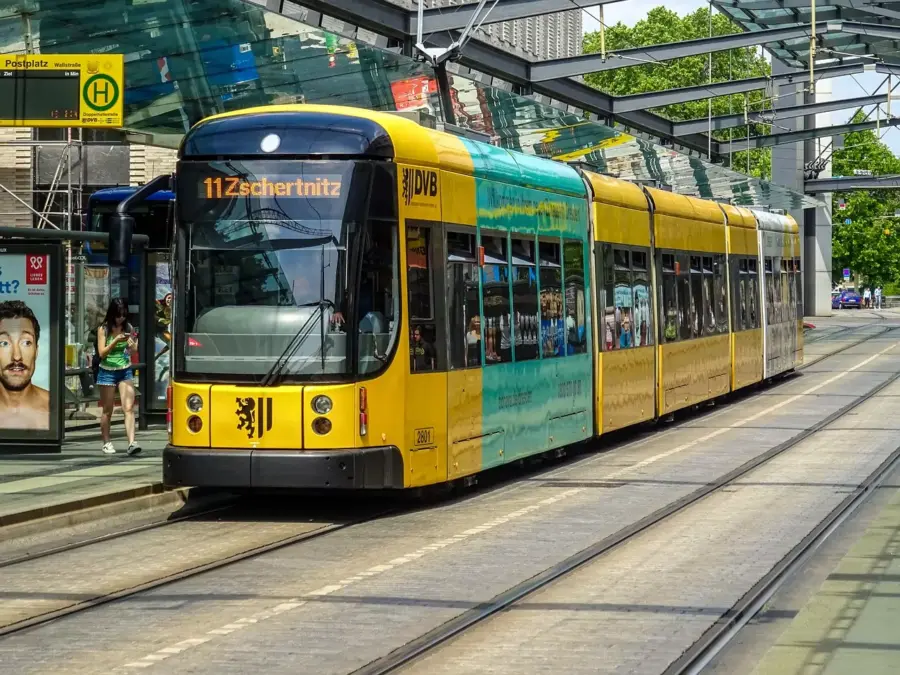
Dresden’s public transport network runs like clockwork with its mix of trams, buses, and S-Bahn trains. The monthly transit pass costs less than in Cologne, making it budget-friendly for regular commuters.
Most locals rely on the efficient tram system that connects all major parts of Dresden. The buses fill in any gaps, reaching areas where trams don’t go.
Cologne’s public transit stands out with its extensive U-Bahn underground network and iconic Kölsch-themed buses. The monthly pass costs €69.90, which sits in the mid-range for German cities.
The signature red KVB trains and buses run frequently throughout Cologne. Riders must buy valid tickets or risk fines as a Schwarzfahrer (fare dodger).
Accessibility and Connectivity
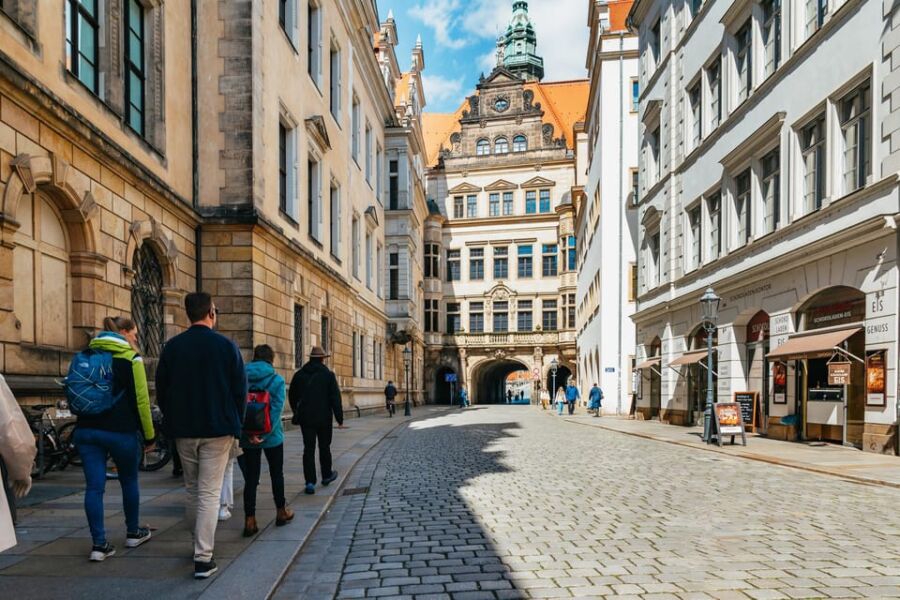
Cologne shines in regional connections thanks to its spot in the Rhine-Ruhr area. The city sits at a major transport hub that puts Amsterdam, Brussels, and Paris within easy reach.
The central train station links seamlessly with local transit, making transfers simple. Green spaces like Bergisches Land lie just outside the city, perfect for day trips.
Dresden’s compact size makes it easy to get around. The main station connects smoothly to trams and buses. Many tourist spots cluster in walkable areas, reducing the need for transport.
The city’s location means slightly longer travel times to other major cities. Still, regular trains run to Berlin, Prague, and other nearby destinations.
Tourist Attractions
Both cities feature stunning architectural landmarks that showcase different periods of German history and design. The contrast between Gothic and Baroque styles creates unique experiences for visitors.
Cologne Cathedral
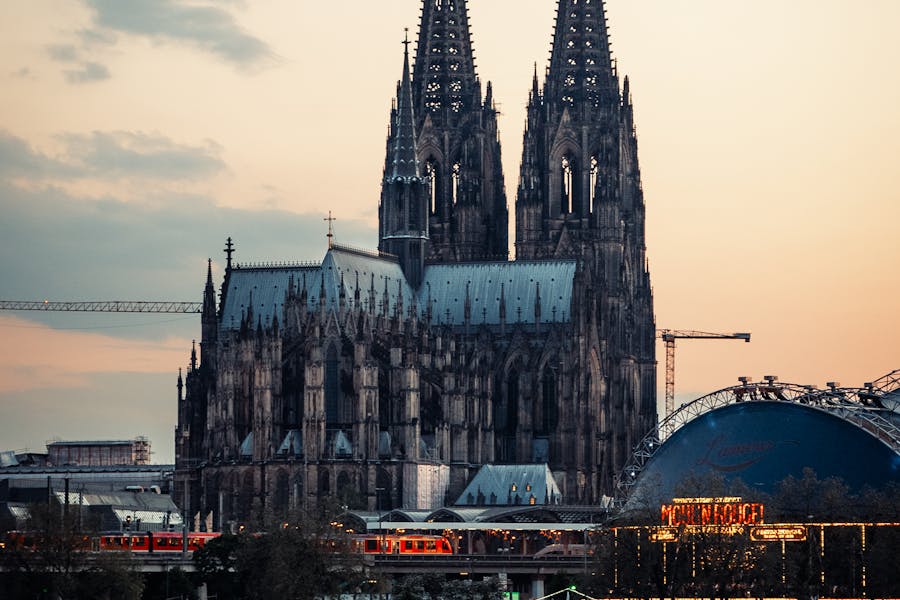
The towering Cologne Cathedral stands as Germany’s most visited landmark. This Gothic masterpiece took over 600 years to complete, reaching a height of 157 meters with its twin spires.
The intricate stone carvings and massive stained glass windows make this UNESCO World Heritage site a must-see destination. The cathedral houses the Shrine of the Three Kings, a golden sarcophagus that draws pilgrims from around the world.
You can climb 533 steps to reach the cathedral’s south tower. The climb rewards visitors with amazing views of the Rhine River and city below.
Dresden’s Baroque Landmarks

Dresden’s historic center features some of Europe’s finest Baroque architecture. The Frauenkirche church stands as a symbol of the city’s rebirth after WWII destruction. Its rebuilding used many original stones recovered from the rubble.
The Zwinger palace complex displays ornate sculptures and fountains throughout its courtyards. Inside, you’ll find world-class museums featuring porcelain collections and Old Masters paintings.
The Semperoper opera house amazes visitors with its detailed Renaissance style. The building hosts performances in the same venue where Wagner and Strauss premiered famous works.
The Residenzschloss royal palace houses Dresden’s historic treasures, including the dazzling Green Vault jewel collection.
Annual Events and Festivals
Both cities come alive throughout the year with vibrant festivals that showcase their unique cultural heritage and local traditions. Each celebration brings its own special charm to these historic German destinations.
Cologne’s Celebrated Carnivals

The world-famous Cologne Carnival takes center stage every February. This massive celebration fills the streets with colorful parades, elaborate costumes, and joyful music.
Pride events transform the city into a rainbow-colored celebration from mid-June to early July. Over 100 different activities bring people together to celebrate diversity and equality.
The festive Christmas markets in December create a magical atmosphere around the Cathedral. Local vendors sell traditional crafts, mulled wine, and regional treats from wooden stalls decorated with twinkling lights.
Dresden’s Cultural Festivities
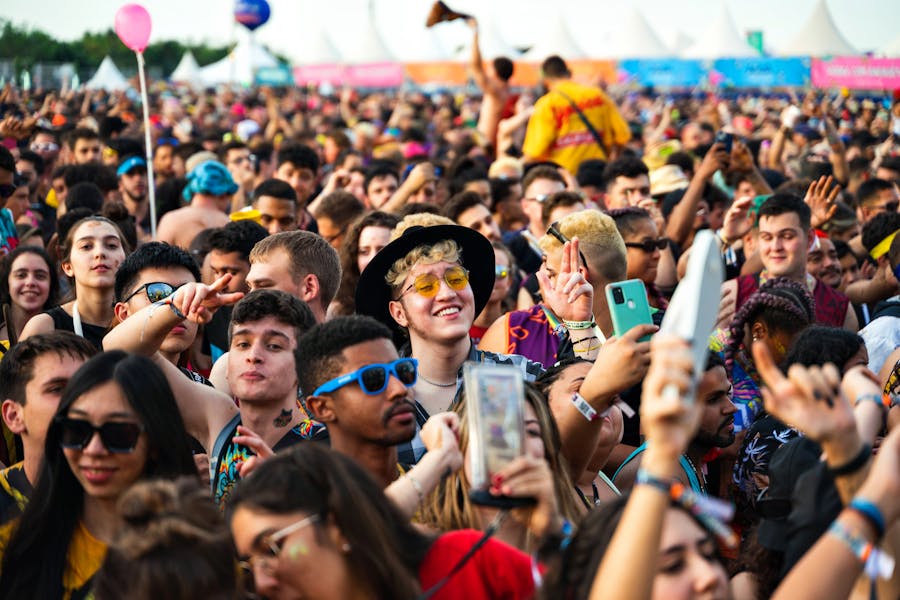
The Dresden Music Festival attracts classical music lovers from May to June. World-class performers fill historic venues with beautiful symphonies and concerts.
The International Dixieland Festival in May brings jazz music to Dresden’s streets and venues. Musicians from around the globe perform traditional jazz tunes for eager crowds.
Dresden’s Christmas markets date back to 1434, making them some of Germany’s oldest. The famous Striezelmarkt features traditional crafts, regional foods, and the world’s tallest Christmas pyramid.
The city hosts spectacular summer events in its baroque Old Town. Open-air concerts and cultural performances take place against the backdrop of stunning historic architecture.
Frequently Asked Questions
Both Cologne and Dresden offer unique experiences for travelers, from Gothic cathedrals to stunning art collections. These cities showcase different sides of German culture through their distinct architecture, food scenes, and local traditions.
What are the must-visit attractions in Cologne compared to Dresden for history enthusiasts?
Cologne’s star attraction is its magnificent Gothic Cathedral, a UNESCO World Heritage site that took over 600 years to build. The cathedral houses the famous Shrine of the Three Kings and offers amazing city views from its tower.
Dresden’s historic center features the restored Frauenkirche church and the Zwinger palace complex. The Residenzschloss houses the Green Vault, one of Europe’s largest treasure collections.
How does the cultural scene in Cologne contrast with that in Dresden?
Cologne’s Museum Ludwig holds one of Europe’s largest Pop Art collections and amazing modern art exhibits. The city hosts numerous art galleries in the Belgian Quarter.
Dresden’s Old Masters Picture Gallery displays famous works by Raphael and Vermeer. The Semperoper opera house stages world-class performances in a stunning neo-Renaissance building.
In terms of local cuisine, how do Cologne and Dresden differ for food lovers?
Cologne’s food scene centers around its famous Kölsch beer. You can find this beer in traditional brew houses, where they serve it with hearty dishes like Himmel un Äd (black pudding with mashed potatoes and apples).
Dresden’s specialties include Christstollen (Christmas bread) and Eierschecke (egg custard cake). The Neustadt area offers trendy restaurants and food markets.
Can you highlight the differences in the festive events or traditions between Cologne and Dresden?
Cologne hosts Germany’s largest carnival celebration in February. At this festival, you can enjoy street parades and costume parties. The Christmas markets spread across several squares near the cathedral.
Dresden’s Striezelmarkt is Germany’s oldest Christmas market. It is famous for its giant Christmas pyramid. The city’s Dixieland Festival also brings jazz music to historic venues each May.
What are the key differences in the transportation options when traveling within Cologne versus Dresden?
Cologne’s extensive public transit system includes underground trains, trams, and buses. The central train station sits right next to the cathedral, making day trips easy.
Dresden offers efficient tram services and river boats on the Elbe. Most tourist attractions are walkable within the compact city center.
How do the shopping experiences in Cologne compare to those in Dresden for unique local goods?
Cologne’s Schildergasse and Hohe Straße offer modern shopping alongside traditional perfume houses selling the famous Eau de Cologne.
In Dresden, the Neustadt district features indie boutiques and artisan shops. The Altmarkt-Galerie combines historic architecture with modern retail in the city center.
